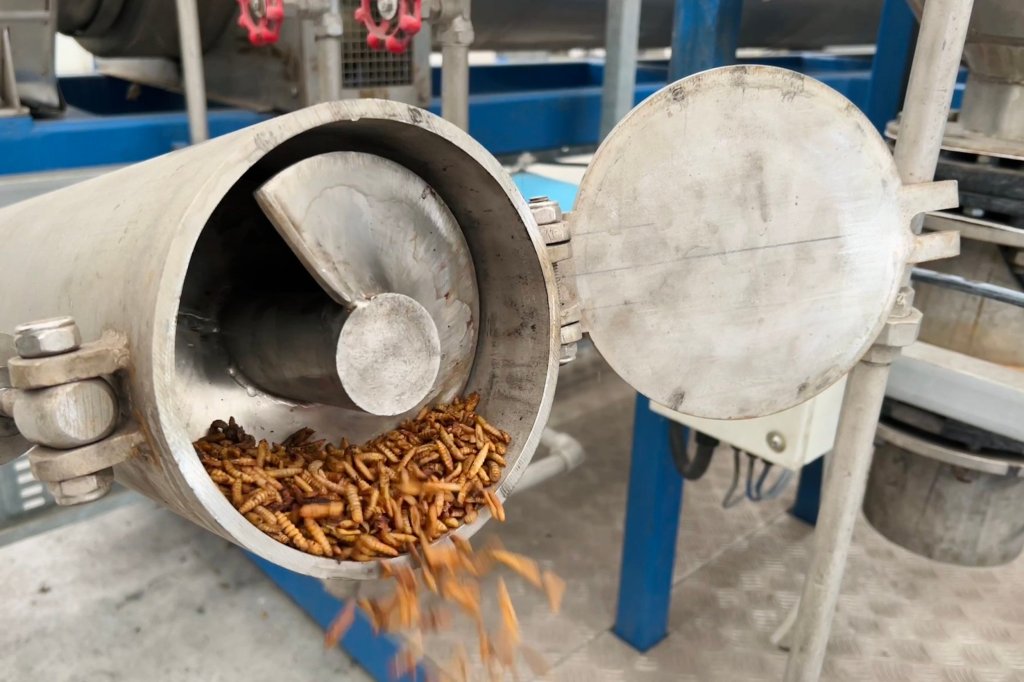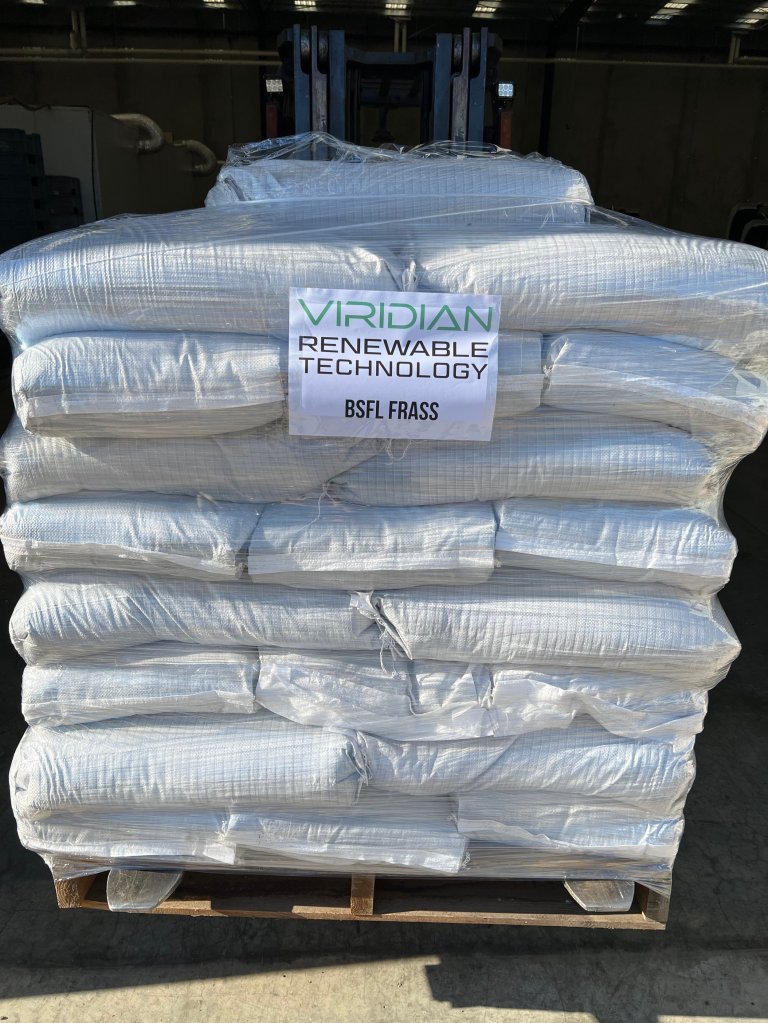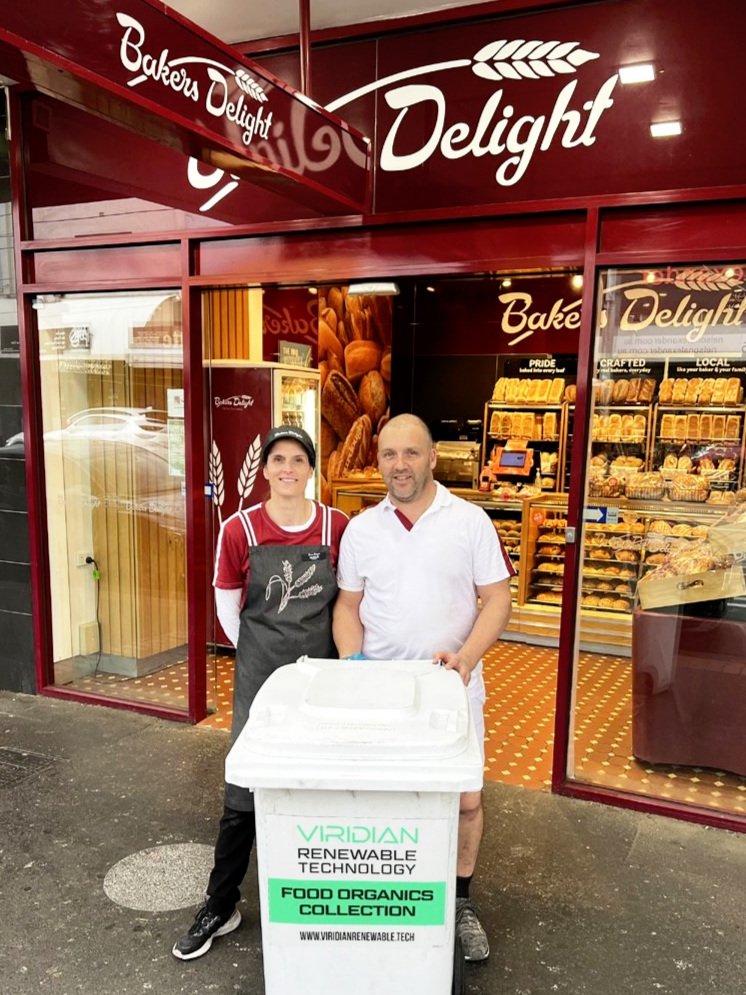Viridian Renewable Technology says it uses insect-based manufacturing technology to create carbon neutral pet, plant, and animal feed ingredients.
The company claims its products are fully circular, using captured pre-consumer food surplus excess food stock from customers as their material input.
Future Alternative spoke to Viridian’s managing director Martin Pike and business development lead Peter Banfield about the state of insect protein in Australia.
How did you come to found Viridian Renewable?
[Martin]: About seven years ago, we had the opportunity to get a group of people together to explore this idea of using black soldier fly larvae (BSFL) to transform food materials normally destined to land-fill into something more environmentally valuable. The industry in Australia and internationally was much less developed then.
We had seen murmurings of what could be done through the company AgriProtein, but it was not really clear if it was possible or how much of that was real. So we sought to explore this concept further.
The first step was, how do we actually breed these larvae? And so we solved that problem and then went bit by bit to keep expanding the business and really explore what it meant to use this meaningfully. It was an opportunity to start something new, something exciting, and to take on a big challenge and solve some real environmental food waste problems.

In Australia we discovered that we’re very good at producing food, but unfortunately, also very good at wasting it as well. And through that initial exploration, we discovered there’s just so much raw material out there that’s being thrown away.
And similarly, on the protein side of things, the more we investigated, the more we realized there’s such an opportunity here to change the way we think about protein.
How are the current state of investment and supply capacity in the insect protein sector?
[Martin]: Globally, the industry is certainly taking off. We see a lot of activity in Europe where a lot of insect protein tends to be going into pet food brands at the moment. So that’s a really exciting sector that we’re watching.
We’re seeing some movement in American brands that are starting to pop up there, especially in the pet food industry, and production is starting to ramp up. So the industry is definitely emerging. It’s still nascent, but there’s a lot of potential. It just comes down to now being able to supply the volumes that the pet and livestock industries want in terms of Australia.


We are making good progress with scaling up the production. I think there’s a lot of opportunities still left to be had here. But what’s clear to me is that there’s people in the industry who are very keen to make it happen here and that we can all work together to build those volumes. That’s one of the biggest challenges, just the volumes required to make this all viable.
To give you an example – in the poultry feed market, there needs to be thousands of tons of insect protein available per annum. And in the Australian market, that volume isn’t really there yet. So we’ve got lots of opportunities, but more work has to be done to keep building those volumes and get it to a point where we can start unlocking those markets.
[Peter]: You’ll get stops and starts everywhere. It’s like herding cats. As Martin mentioned, you’ve got customers for the inputs and customers for the outputs. And then they’ve got customers. And it’s a new category and a new market – very complex on managing the timeline.
For instance, you might originally market the insect protein to augment existing meat systems. Then halfway through the process, it’s found that there’s a hole in the nutritional aspects to insect proteins compared to traditional proteins, so we need to pivot a bit in the retail sector.
Then ranging is not till next March for launch next December, and it can put you back. So there’s all those sorts of velocities you’ve got to manage. And that’s what makes it really difficult.
Speaking of scaling production, you have a new global scale site in Melbourne.
[Martin]: That site is where we are currently operating. It’s operating now at about 10% capacity. But over the next six to nine months we’ll be scaling it up to 100% capacity, to give you an idea of the throughput.
We’ll be processing about 12,000 tons of food material inputs to create about 900 tons of protein or dry protein ingredients, as well as the insect manure or ‘insect frass’ as it’s called.

To my knowledge, [Viridian’s production site] is one of the largest production sites of its type in Australia, and it’s definitely competing with a lot of the developments that we see happening overseas.
The exciting thing for us is that once we are able to test, improve, and demonstrate this model, we will have numerous opportunities here in Australia to develop more of these sites using that same technology.
And so what that will mean is that we can more rapidly scale up the production to help Australia get into the thousands of tons per annum of protein production that’s required.
Are all of your products produced at the Melbourne site, or do some require cooperation with other manufacturers?
[Martin]: We do all of it at [the Melbourne] site, all the end-to-end processing. We have the technology here to process the raw material inputs. Then that gets fed to our larvae, which we also grow on site using our insect husbandry technology.
We then have the technology to process those larvae into various protein oil and fertilizer ingredients. The site already has all those capabilities. It’s now just about increasing the production capacity.
What’s the ratio of your insect production business to your food waste management business, or are they completely circular?
[Martin]: Obviously, we need the inputs to make more of the products. So as our production increases, we scale up the throughput of input materials. Fortunately for us, there’s just so much of it out there that it’s not really a great difficulty sourcing those materials.
One thing that is sort of unique about our approach is that we only target pre-consumer clean food byproducts from food manufacturing. We don’t really touch what people would call ‘food waste’. And the reason why we do that is that first and foremost, we are a protein producer. And we want to make sure that the protein ingredients that we deliver to our customers are of a very high quality and most importantly, free from any contaminants.
That’s why we only target very high quality, clean pre-consumer inputs to make sure that the protein and the other products that we produce are very safe for pets and animals to consume.
What kind of customers are you cooperating with on your input materials?
[Martin]: One of our most high profile suppliers of inputs is Bakers Delight, which is a national bakery franchise with stores all around Victoria as well as in Sydney and Queensland. We are ramping up their collection service to capture all of their excess stock. At the end of the day, any unsold bread products come to us. They aren’t thrown away. We’re able to transform them into meaningful products and avoid that wastage going to the landfill.

But for large businesses, that turns out to be a very large amount of stock. Another group that we collect stock from regularly calls us up to ask if we can take a pallet because a forklift pierced a bag or a bag fell off the shelf and they can’t use it anymore as it’s deemed unsafe. But in reality, it’s perfectly fine.
And so it’s that sort of high quality input that we target to ensure that the feed materials we use don’t have any contaminants, be it physical, plastic, metal, rubbish, but also chemical as well.
Because, if you’ve got materials from somewhere like a consumer’s home or from a restaurant or a food court, you don’t necessarily know what’s been put into those bins. So that’s why we only target sources where we have that traceability. Where we can say that in this particular batch, there were some of this and some of that and some of this. And so we know exactly what goes into producing that diet for the larvae.
Do you have any new product releases coming up?
[Martin]: In the next six to nine months, we’ll see some really exciting consumer product releases here in the Australian market with some very strong brands that we’re working with to create some products with. We’ve done plenty of taste testing and support and everything required to give them the best advantage.
To stay up-to-date on the latest industry headlines, sign up to Future Alternative’s enewsletter.
Posted on:


